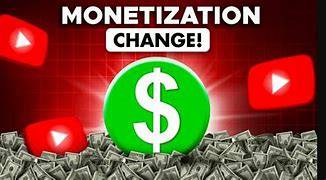This guide will walk you through the key aspects of
YouTube monetization, helping you understand how to make the most of your
channel.
1. Eligibility for Monetization
Before you can start earning money on YouTube, you
need to meet certain requirements. These criteria are set to ensure that only
quality content is monetized, and to maintain a fair playing field for all
creators. The main requirements for joining YouTube’s Partner Program (YPP)
include:
1,000 Subscribers: You must
have at least 1,000 subscribers on your channel.
4,000 Watch Hours: Your channel needs
to have accumulated 4,000 hours of watch time in the past 12 months.
Adherence to
YouTube Policies: Your content must comply with all YouTube community
guidelines, terms of service, and copyright laws.
Linked
AdSense Account: You need to set up an AdSense account to receive payments from
YouTube ads.
Once you meet these requirements, you can apply for
the YouTube Partner Program. YouTube will review your channel, and if approved,
you can start monetizing your content.
2. Ways to Monetize on YouTube
a. Ad Revenue
The most common way to earn money on YouTube is through
ads. Once your channel is monetized, ads will be displayed on your videos, and
you’ll earn a portion of the revenue based on ad views and clicks. This revenue
is shared between YouTube and the creator, with the creator typically receiving
55% of the ad revenue.
Ad revenue varies depending on several factors,
including the type of ads, viewer location, and the advertiser’s budget. Some
content categories, such as finance or tech, tend to attract higherpaying
advertisers.
If your channel has over 30,000 subscribers, you can
offer memberships to your viewers. Fans can pay a monthly fee to access
exclusive perks like badges, emojis, and membersonly content. This is a great
way to build a loyal community and generate a steady stream of income.
Super Chat and Super Stickers allow viewers to pay
to have their messages highlighted during live streams. This feature is popular
among streamers, as it encourages viewer engagement while offering creators a
way to earn extra income during live broadcasts.
YouTube Premium subscribers can watch your videos
without ads. You still earn money from these views, but instead of ad revenue,
you receive a portion of the subscription fees based on how much Premium
members watch your content.
For channels with at least 10,000 subscribers,
YouTube offers the ability to sell merchandise directly through your channel.
This can include branded products like Tshirts, mugs, or other merchandise
related to your content.
3. Maximizing Your YouTube Revenue
Your content is the foundation of your success on
YouTube. To attract viewers and keep them coming back, focus on creating videos
that are both entertaining and informative. Highquality production values,
clear audio, and engaging storytelling can make a huge difference in viewer
retention and growth.
Search engine optimization (SEO) is crucial for
ensuring your videos reach a larger audience. Use relevant keywords in your
video titles, descriptions, and tags to increase the chances of your content
appearing in YouTube’s search results. Additionally, custom thumbnails and
strong callstoaction can help boost clickthrough rates.
Uploading videos consistently helps maintain viewer
interest and keeps your audience engaged. Develop a content schedule and stick
to it. Regular uploads also give you more opportunities to generate views and,
ultimately, revenue.
d. Leverage Multiple Revenue Streams
Don’t rely solely on ad revenue. Make use of
YouTube’s other monetization features like memberships, Super Chat, and
merchandise. You can also seek sponsorships, brand deals, or offer paid
services related to your content niche.
4. Challenges and Considerations
YouTube offers a wealth of opportunities for
creators to turn their passion into profit. By understanding the platform’s
monetization policies, exploring different revenue streams, and consistently
producing highquality content, you can maximize your earnings and grow a
successful YouTube channel. While the road to monetization may be challenging,
the potential rewards make it worth the journey.


